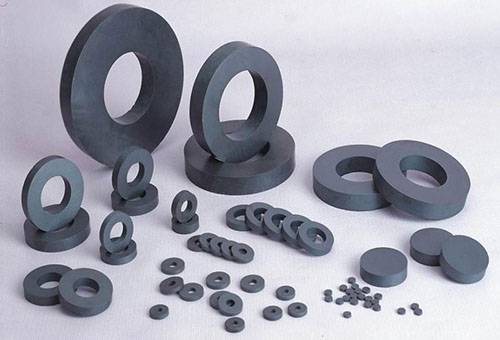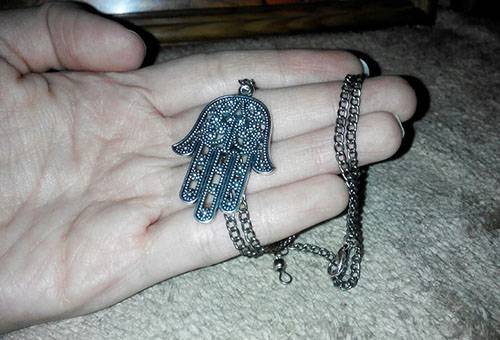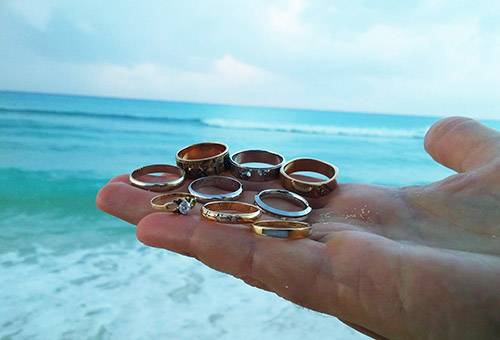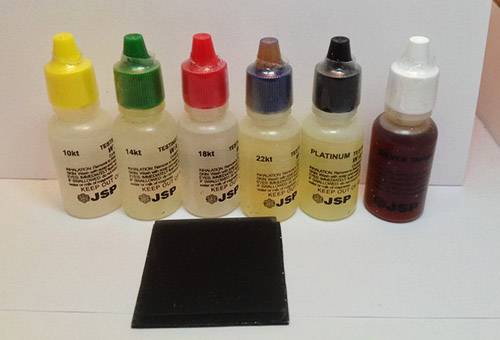8 Ways to Authenticate Silver at Home
Content:
Do you want to determine what exactly this cute owner of an antique goods store is trying to sell you, or maybe you have been presented with a new silver chain of which you doubt the quality? Thinking about how to check silver at home? No, we will not offer you to bring the product to the laboratory for spectral analysis. Instead, let’s try to limit ourselves to all available means, which are likely to be at your fingertips.
Magnet
The simplest way a fake can detect is a magnet. If the product is magnetized, it means that it is definitely not made of noble metal, which the careless seller is trying to convince you of. Silver, like gold, has no reaction to a magnet, but, unfortunately, in the opposite scenario, you can’t be 100% sure that you have pure silver, so this method is more likely to discard an open fake, and it’s better use in conjunction with the tips below.
Temperature
Holding a silver spoon in your hands, you will feel that the product quickly gained the temperature of your body. This is due to the high thermal conductivity of silver, which produces suspiciously long-lasting cool fakes from other metals.
Tip
You can also go from the opposite and put, for example, a cube of ice on a coin or tray. If it melts abnormally quickly, then you have real silver, if not, it is better to refrain from buying.
Look, sound and smell
Not everyone can learn silver by these criteria, and it is also difficult to name that method exact. But if you had silver utensils, say, in childhood, then most likely remember this specific smell. Real silver items have a subtle and sonorous sound, somewhat reminiscent of crystal, and if you drop a coin on a metal tray, it will sing in a very special way. Also in the color of the new or well-groomed silver there are no admixtures of shades of yellow or pink, although they can appear if the metal is not properly taken care of.
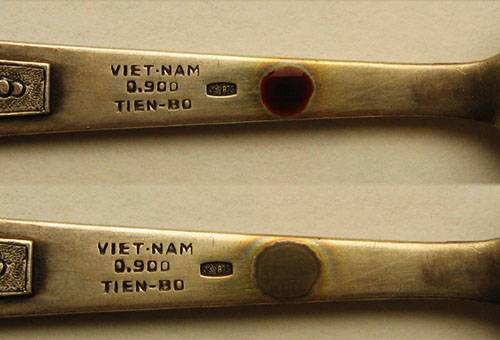
The reaction of silver on iodine
Reagents available
If you don’t want to listen, sniff and look closely, you can determine the authenticity of silver using bleach, sulfuric acid or iodine. To do this, put a barely noticeable spot on the product with a cotton swab and watch for its reaction. Has the product started to darken around the perimeter of the spot? Then in front of you is a silver or at least a silvered thing. Not? Then silver does not smell here.
Tip
And you can check the authenticity without fear of spoiling the thing by rubbing it with chalk. In this case, the contact should be blackened with silver chalk.
Handprint
It is worth doubting the authenticity of the product if, after prolonged holding in hands, it left a mark on them. Pure silver, in which there are no impurities, will not leave any plaque on hand.
Internet or numismatic guides
A great way for numismatists is to compare the weight of the coin in the directory with the real weight of the item offered for purchase. Due to the difference in density, it is very easy to determine a coin made from other metals, even if it is silver-plated and looks exactly like real.
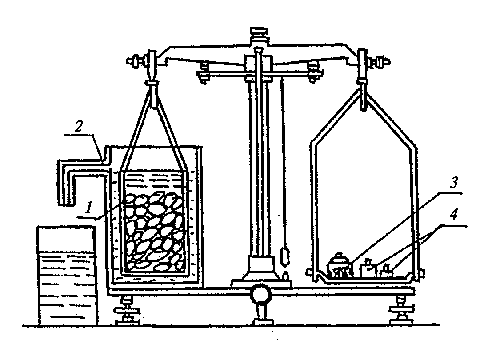
Scales for hydrostatic weighing
1 - mesh (perforated) glass; 2 - a vessel with a drain for water; 3 - a glass with a fraction to balance the mass of the mesh glass in water; 4 - weights
Hydrostatic weighing
The easiest way to determine the authenticity of the product by determining the density of the material. To do this, you must first weigh the dry coin. Then pour water into a glass, zero the scales and determine the “wet” weight of the coin. Now we divide the “dry” weight by the difference in two dimensions, and if the resulting number is in the region of 10.5, then you have real silver, since the metals used for counterfeiting do not have a similar density.
At home, you can try using food grade electronic scales, but to determine the authenticity of a coin or jewelry, its accuracy should be quite high.
Chemical test
If you are not alien to chemistry, get a chemical test for the authenticity of silver. This is one of the most accurate ways to determine the quality of the substrate of a silver-plated product. For the test, you need to either make a fairly deep scratch on an inconspicuous part of the product, or rub the product on a touchstone. Now we drop acid on a trace on a stone or a substrate in a scratch and look at the color: the brighter the shade of red, the purer the silver. So, a light brown color indicates the silver of the 800th sample, and green - already the 500th. The remaining colors will give the most popular metals for silvering: yellow corresponds to tin or lead, dark brown to brass, and blue to nickel. Now you can be sure of the composition of the product not only on the surface, but also inside.
As you can see, it is not necessary to bend or cut a silver spoon to determine the authenticity, even if you did not find the stigma with a breakdown. Use these tips and you will repeatedly reduce the chance of running into a fake.
